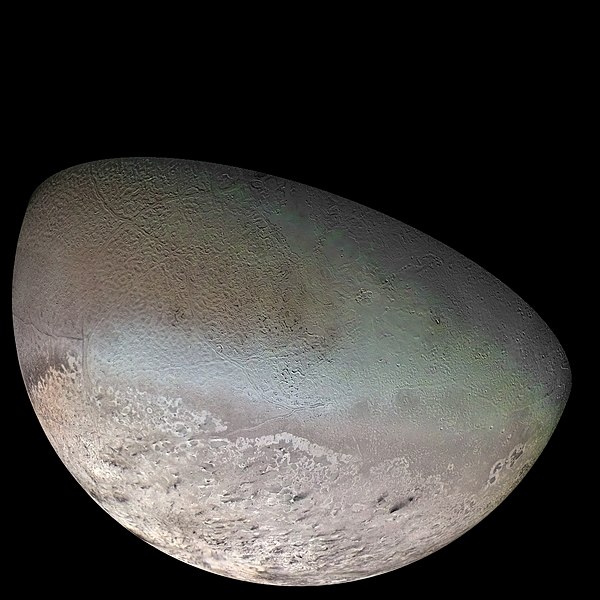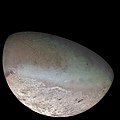Fail:Triton moon mosaic Voyager 2 (large).jpg

Saiz pralihat ini: 600 × 600 piksel. Leraian-leraian lain: 240 × 240 piksel | 480 × 480 piksel | 768 × 768 piksel | 1,024 × 1,024 piksel | 2,048 × 2,048 piksel | 4,700 × 4,700 piksel.
Fail asli (4,700 × 4,700 piksel, saiz fail: 12.11 MB, jenis MIME: image/jpeg)
Sejarah fail
Klik pada tarikh/waktu untuk melihat rupa fail tersebut pada waktu itu.
| Tarikh/Waktu | Gambar kenit | Ukuran | Pengguna | Komen | |
|---|---|---|---|---|---|
| semasa | 19:40, 10 Oktober 2011 |  | 4,700 × 4,700 (12.11 MB) | Jbarta | Minimally compressed JPG from TIFF original at NASA. This image has already been colored by NASA. I think we have no business trying to "fix" the coloring. The only alteration made from the NASA original is to enlarge the canvas to enclose the complete sp |
| 21:00, 1 Januari 2010 |  | 4,600 × 4,600 (2.81 MB) | Supportstorm | Image Adjustments: Auto levels on contrast and color | |
| 21:59, 18 Februari 2008 |  | 4,600 × 4,600 (1.71 MB) | Kaldari | same image, better dimensions | |
| 04:59, 8 April 2005 |  | 4,500 × 3,500 (1.96 MB) | Bricktop | same image, higher resolution | |
| 17:13, 3 April 2005 |  | 1,024 × 796 (150 KB) | Smartech~commonswiki | A color mosaic of Triton, Neptune's moon (large). Taken by Voyager 2 in 1989. Color was synthesized by combining high-resolution images taken through orange, violet, and ultraviolet filters; these images were displayed as red, green, and blue images and |
Penggunaan fail
2 buah laman berikut menggunakan fail ini:
Penggunaan fail sejagat
Fail ini digunakan oleh wiki-wiki lain yang berikut:
- Penggunaan di af.wikipedia.org
- Penggunaan di an.wikipedia.org
- Penggunaan di ar.wikipedia.org
- Penggunaan di ary.wikipedia.org
- Penggunaan di arz.wikipedia.org
- Penggunaan di ast.wikipedia.org
- Penggunaan di azb.wikipedia.org
- Penggunaan di az.wikipedia.org
- Penggunaan di ba.wikipedia.org
- Penggunaan di be-tarask.wikipedia.org
- Penggunaan di be.wikipedia.org
- Penggunaan di bg.wikipedia.org
- Penggunaan di bn.wikipedia.org
- Penggunaan di bn.wikibooks.org
- Penggunaan di bs.wikipedia.org
- Penggunaan di ca.wikipedia.org
Lihat banyak lagi penggunaan sejagat bagi fail ini.

